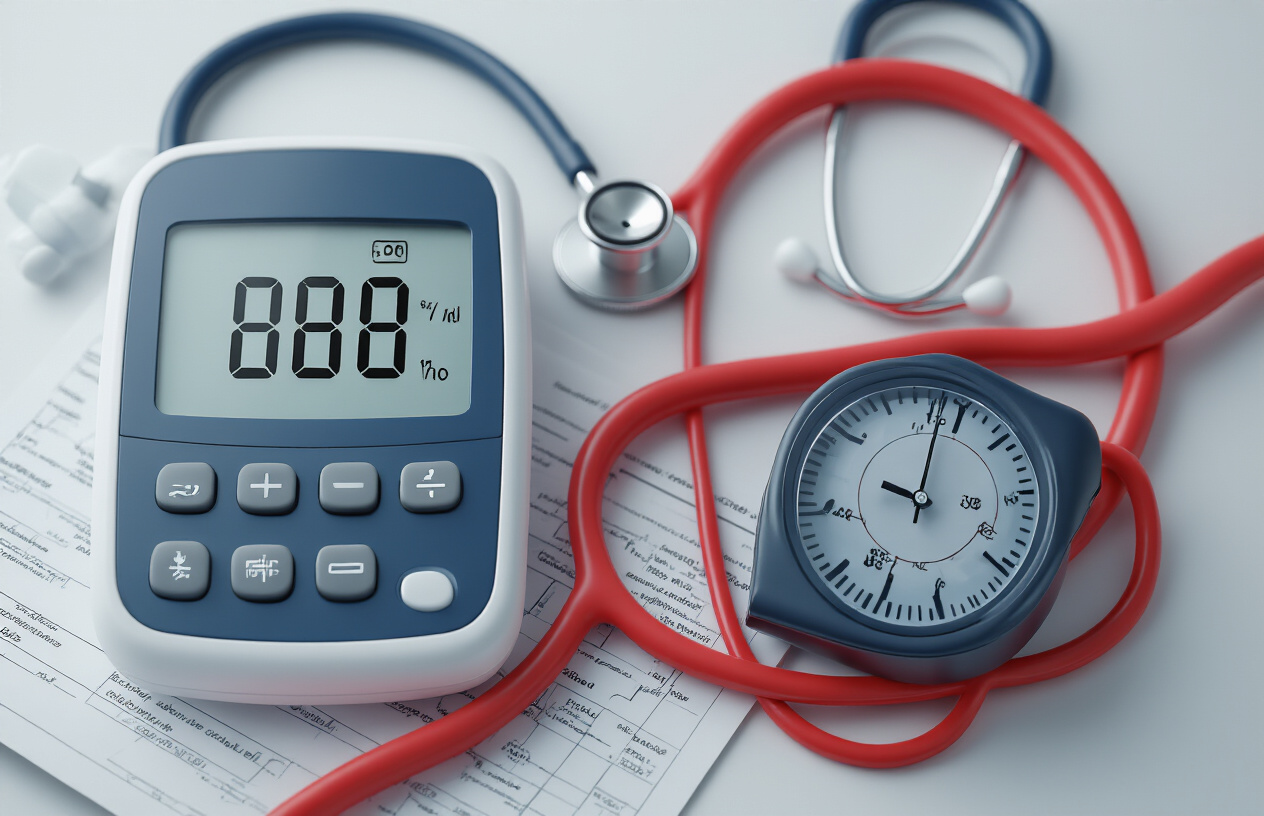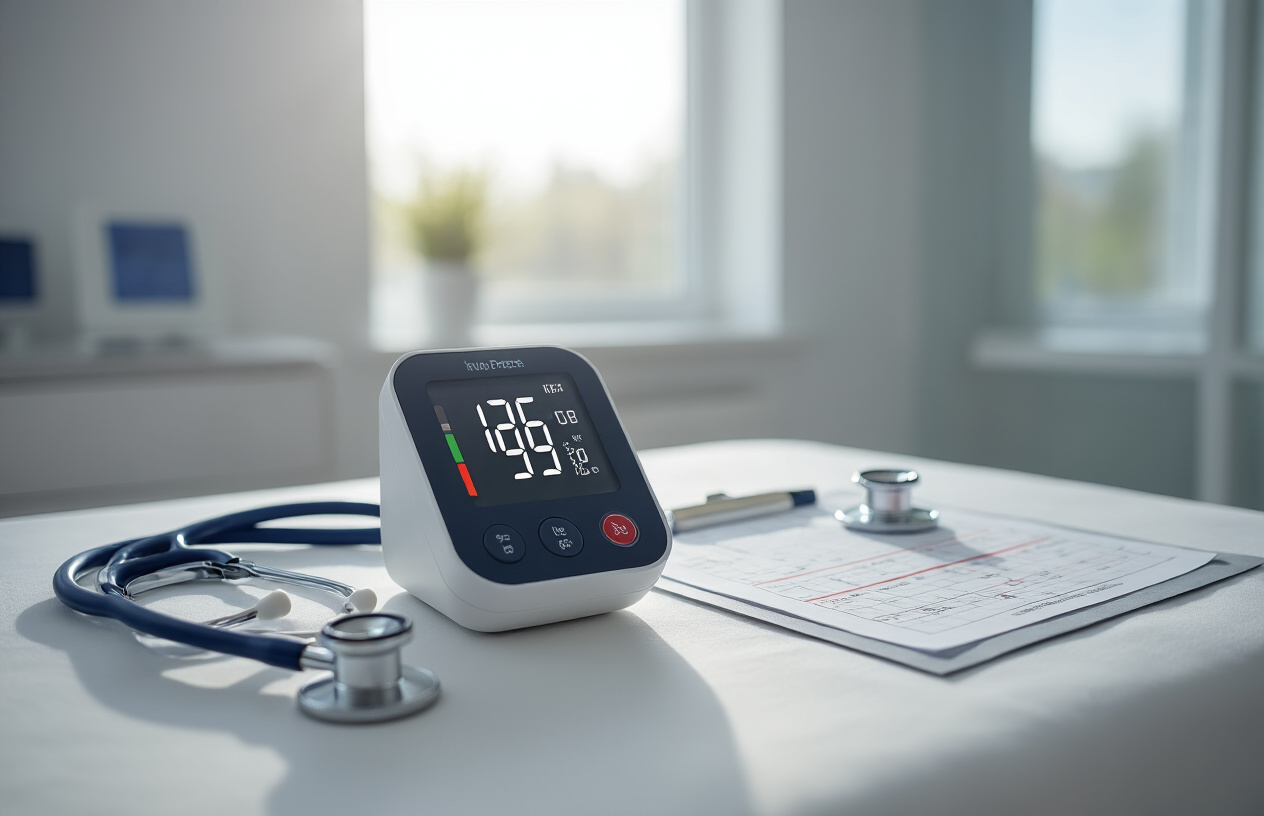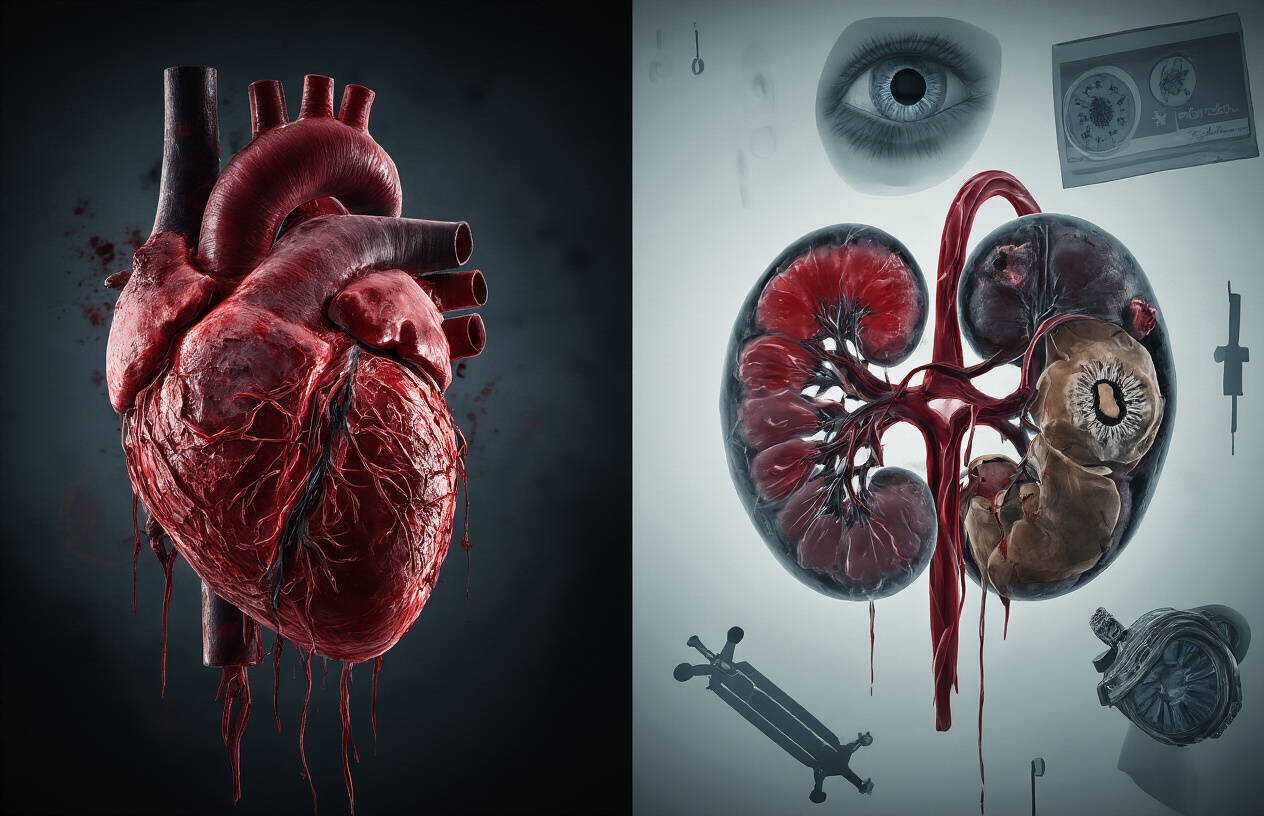High blood pressure and diabetes often go hand in hand, creating a dangerous combination that affects millions of Americans. This guide is for anyone living with diabetes, those at risk for high blood pressure, or people who want to understand how these conditions work together.
People with diabetes are twice as likely to develop high blood pressure compared to those without diabetes. When you have both conditions, your risk of heart disease jumps to four times higher than someone with neither condition. The good news? You can take control of both with the right knowledge and action plan.
We’ll walk you through understanding blood pressure readings and what those numbers actually mean for your health. You’ll learn about the serious complications that can happen when diabetes and high blood pressure go untreated. Most importantly, we’ll share proven lifestyle changes and medical treatments that can help you manage both conditions and protect your long-term health.
Understanding the Connection Between Diabetes and High Blood Pressure

Why Diabetics Face Double the Risk of Hypertension
People with diabetes and high blood pressure face a dangerous combination that significantly amplifies their cardiovascular risks. High blood pressure is twice as likely to strike a person with diabetes than someone without diabetes, creating a concerning pattern where most diabetics will eventually develop hypertension alongside other heart and circulation problems.
How Diabetes Damages Arteries and Causes Atherosclerosis
The relationship between diabetes and hypertension extends beyond simple statistics. Diabetes damages arteries throughout the body, making them prime targets for hardening through a process called atherosclerosis. This arterial damage creates a cascading effect where blood vessels lose their flexibility and efficiency, ultimately contributing to elevated blood pressure levels.
The Four-Times Greater Heart Disease Risk for Those with Both Conditions
The combined impact of diabetes and high blood pressure creates exponentially increased health risks. A person managing both diabetes and high blood pressure faces four times the likelihood of developing heart disease compared to someone without either condition, highlighting the critical importance of understanding and managing this dangerous combination.
Recognizing Blood Pressure Numbers and What They Mean

Understanding Systolic and Diastolic Pressure Readings
Blood pressure is measured by two numbers recorded as “mm Hg” (millimeters of mercury). The systolic (top) pressure represents the pressure when the heart contracts and pumps blood, while the diastolic (bottom) pressure measures the pressure when the heart is at rest and filling with blood.
Optimal Blood Pressure Goals for People with Diabetes
| Blood Pressure Category | Systolic (mm Hg) | Diastolic (mm Hg) |
|---|---|---|
| Normal | Less than 120 | Less than 80 |
| Prehypertension | 120-139 | 80-89 |
| High Blood Pressure | 140 or greater | 90 or greater |
| Diabetes Goal | No more than 130 | No more than 80 |
For most people with diabetes, maintaining blood pressure at no more than 130/80 is recommended to prevent complications.
Warning Signs of Elevated Blood Pressure You Shouldn’t Ignore
Often, people with high blood pressure do not have noticeable symptoms, making regular blood pressure checks necessary. When blood pressure is greatly elevated, symptoms may include:
- Headache
- Dizziness
- Blurred vision
However, these symptoms can resemble other medical conditions, emphasizing why understanding blood pressure readings and monitoring are crucial for diabetes management.
Life-Threatening Complications When Both Conditions Go Untreated

Increased Risk of Heart Attack and Stroke
Left untreated, the dangerous combination of diabetes and high blood pressure dramatically escalates your cardiovascular risks. High blood pressure directly increases the risk of coronary heart disease, leading to heart attacks, while simultaneously raising stroke probability through blood vessel damage.
Diabetic Eye Disease and Kidney Damage Progression
Hypertension significantly accelerates complications of diabetes and hypertension, particularly worsening diabetic eye disease and kidney disease progression. When blood pressure remains uncontrolled in diabetic patients, it creates a destructive cycle that rapidly deteriorates these vital organs.
Peripheral Vascular Disease and Heart Failure Development
People with hypertension more often develop coronary artery disease, peripheral vascular disease affecting legs and feet through arterial hardening, and heart failure. Without proper diabetes high blood pressure management, these conditions compound each other, creating life-threatening complications that can lead to kidney failure and complete cardiovascular system breakdown.
Proven Lifestyle Changes That Control Both Conditions

Maintaining Healthy Weight and Regular Exercise Routines
Getting to and staying at a healthy weight while engaging in regular exercise most days forms the foundation of managing both diabetes and high blood pressure effectively. Physical activity helps your body use insulin more efficiently while strengthening your cardiovascular system, creating a dual benefit for diabetic hypertension treatment.
Reducing Salt Intake and Managing Stress Effectively
Reducing your salt intake directly impacts blood pressure control diabetes management, as excess sodium causes fluid retention that strains your cardiovascular system. Simultaneously, engaging in stress-relieving activities helps prevent stress hormones from elevating both blood sugar and blood pressure levels, making this combination essential for comprehensive diabetes high blood pressure management.
Eliminating Smoking and Limiting Alcohol Consumption
Stopping smoking and avoiding exposure to secondhand smoke protects your blood vessels from damage while improving circulation throughout your body. Additionally, avoiding excessive alcohol intake and limiting drinking prevents blood pressure spikes and helps maintain stable blood sugar levels, supporting your overall lifestyle changes for diabetes blood pressure control.
Medical Treatment Options That Protect Your Health

ACE Inhibitors and ARBs as First-Line Diabetes-Friendly Medications
Most doctors use ACE inhibitors (angiotensin-converting enzyme inhibitors) and ARBs (angiotensin II receptor blockers) as first-line treatments for diabetic hypertension treatment, as these medications provide dual benefits by controlling blood pressure while also helping prevent or slow kidney disease progression in people with diabetes and high blood pressure.
Managing Side Effects and Blood Sugar Impact of Blood Pressure Drugs
Some blood pressure medications may negatively impact blood sugar and lipid levels, or cause unwanted side effects such as erectile dysfunction. It’s crucial to discuss these potential complications with your doctor to ensure your diabetes high blood pressure management plan addresses both conditions effectively without compromising your overall health.
Regular Monitoring and Professional Medical Management
Your doctor determines specific treatment based on your age, overall health, medical history, disease extent, medication tolerance, expectations, and personal preferences. Treatment typically combines lifestyle changes like exercise, balanced diet, and smoking cessation with prescribed medications. Regular blood pressure monitoring by your healthcare provider and potentially at home is essential for effective blood pressure control diabetes management, as high blood pressure often presents no symptoms.

Managing diabetes and high blood pressure together requires a comprehensive approach that combines understanding, lifestyle changes, and proper medical care. As we’ve explored, people with diabetes are twice as likely to develop high blood pressure, and when both conditions go untreated, the risk of heart disease increases fourfold. By recognizing blood pressure numbers, implementing proven lifestyle modifications like regular exercise, healthy eating, and salt reduction, and working with healthcare providers to find the right medications, you can effectively control both conditions.
The good news is that many of the strategies that help manage diabetes also benefit blood pressure control. Regular monitoring, maintaining a healthy weight, avoiding smoking, and limiting alcohol intake serve as powerful tools in protecting your cardiovascular health. Since high blood pressure often has no symptoms, consistent blood pressure checks and medical supervision are essential. Take charge of your health today by discussing your blood pressure targets with your doctor and creating a personalized management plan that addresses both your diabetes and cardiovascular well-being.